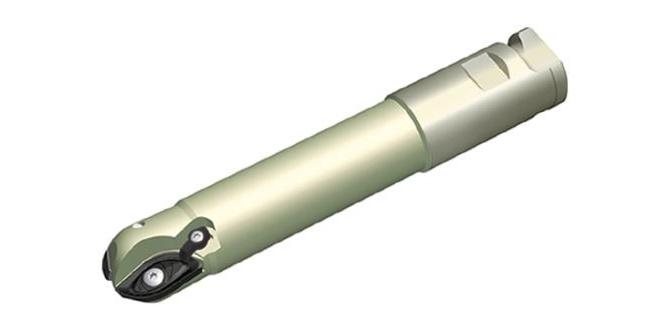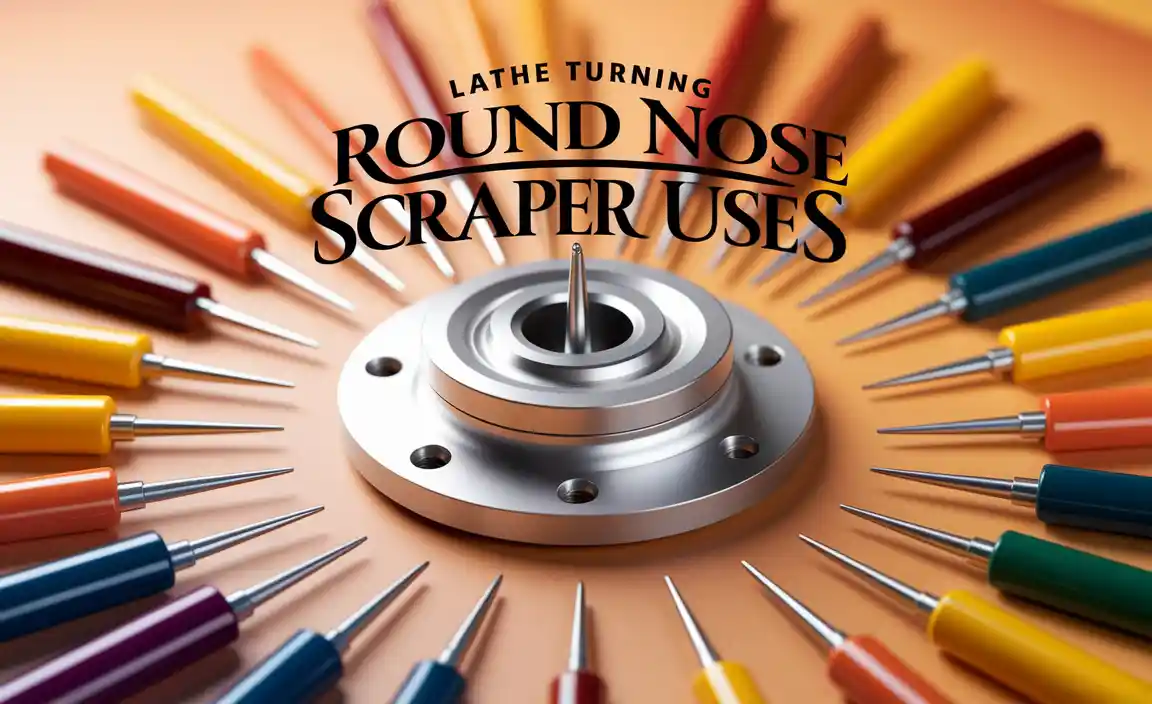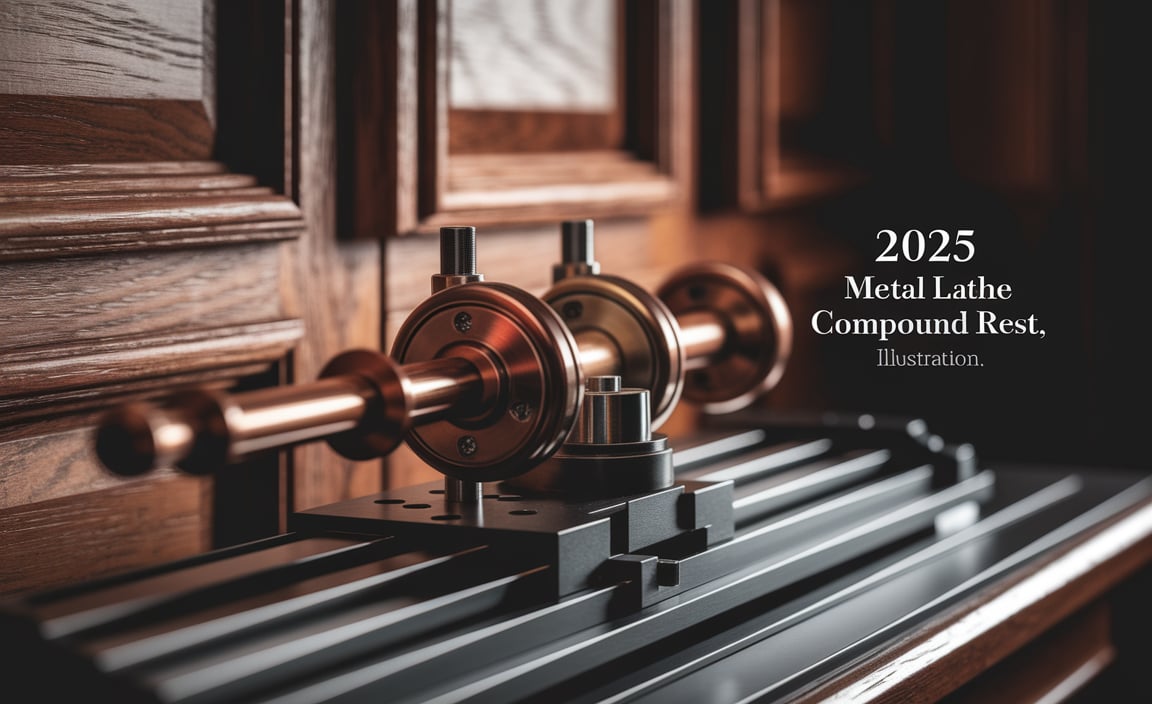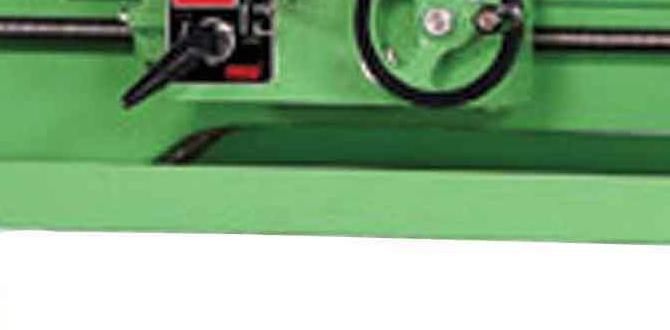The 3/16 inch (8mm shank) carbide end mill is your secret weapon for eliminating frustrating MDF chatter, ensuring clean cuts and perfectly smooth surfaces on your projects. This guide shows you how to use it effectively.
MDF can be a wonderfully forgiving material for hobbyists and woodworkers. It’s smooth, stable, and takes paint beautifully. However, when it comes to cutting, MDF has a reputation for causing a woodworking nightmare: chatter. That’s the unpleasant vibration that leaves behind an ugly, rippled surface, making your projects look rough and unprofessional. You might have tried different speeds, feed rates, or even different bits, only to be met with the same annoying sound and ruined finish. It’s enough to make anyone want to throw in the towel! But don’t worry, there’s a specific tool designed to tackle this problem head-on. We’re going to dive into how a particular type of end mill, the 3/16 inch carbide end mill with an 8mm shank, can become your go-to solution for smooth, chatter-free MDF cuts. Let’s get your projects looking their best.
Why Does MDF Cause Chatter?
MDF, or Medium-Density Fiberboard, is made from wood fibers mixed with wax and resin binders, all compressed under heat and pressure. This composite nature gives it its advantages, but it also means it behaves differently than solid wood, especially when it comes to cutting. Unlike solid wood, MDF lacks the grain structure that helps to absorb vibrations. The uniform density and the presence of fine dust particles can lead to increased friction and a tendency to resonate.
This resonance is the root cause of chatter. As the cutting edges of your tool engage with the MDF, they can “grab” and release rapidly. This rapid engagement and disengagement create vibrations that travel through the material and the machine. These vibrations are what you hear and see as chatter marks on your workpiece. It’s a common frustration, especially for makers working with CNC machines or even powerful routers. The goal is to find a tool and a technique that minimizes this vibratory tendency.
Understanding the Carbide End Mill for MDF
When we talk about cutting MDF smoothly, a standard woodworking bit might not be enough. This is where specialized cutting tools come into play. The focus of our discussion is the 3/16 inch (which is approximately 4.76mm, often paired with an 8mm shank) carbide end mill. Let’s break down what makes this specific type of end mill so effective:
What is a Carbide End Mill?
An end mill is a type of milling cutter, similar to a drill bit but with cutting edges along the side as well as the tip. They are used in various machining and routing applications to cut slots, pockets, profiles, or simply to create a flat surface. “Carbide” refers to the material the cutting edges are made from – tungsten carbide. Carbide is an extremely hard and durable material, significantly harder than high-speed steel (HSS) often used in basic drill bits.
The hardness of carbide means it can:
- Maintain its sharp edge for much longer.
- Withstand higher cutting speeds and temperatures.
- Cut through tough materials like MDF with less effort and less wear.
The 3/16 Inch Size and 8mm Shank
The 3/16 inch (approx. 4.76mm) cutting diameter is critical for MDF. Smaller diameter bits tend to have higher natural frequencies, making them less prone to resonating with the MDF. This finer cut allows for more precise engagement with the material, reducing the chance of the bit “grabbing” and causing vibrations.
The 8mm shank is the part of the end mill that grips into your tool holder or collet. An 8mm shank is a common size for many smaller routers and CNC machines. It offers a good balance of rigidity and compatibility with a wide range of hobbyist and entry-level professional equipment. A sturdier shank helps to reduce flex and vibration during cutting.
The Reduced Neck Design for MDF
This is perhaps the most vital feature specifically for tackling MDF chatter. Many end mills designed for softer materials like MDF will feature a “reduced neck” or “relief” behind the cutting flutes. This means the body of the end mill is slightly thinner just behind the cutting edges.
Here’s why this reduced neck is a game-changer:
- Less Drag: As the end mill cuts, the body of the tool creates friction against the sides of the cut. A reduced neck minimizes this friction, allowing the tool to pass through the material more smoothly.
- Chip Evacuation: The reduced neck can also help create a wider space for chips to escape. Efficient chip removal is crucial for preventing heat buildup and further aiding in a clean cut.
- Vibration Damping: The subtle taper behind the cutting edge can act as a form of vibration damping, absorbing some of the energy that would otherwise translate into chatter.
When choosing an end mill for MDF, look for descriptions that mention “reduced neck,” “relief cut,” or specifically state that it’s designed for “non-ferrous metals,” “plastics,” or “composites.” These are often engineered with features to combat chatter.
How to Use the 3/16 Inch Carbide End Mill to Kill MDF Chatter
Simply buying the right tool isn’t always enough. How you use it is just as important. Following these steps and best practices will maximize your success and achieve those beautiful, smooth cuts in MDF you’ve been aiming for.
Step 1: Proper Tool Mounting
A secure tool mount is the first line of defense against chatter. Any wobble or runout in your tool holder will be amplified during cutting.
- Cleanliness is Key: Ensure the shank of your end mill and the inside of your collet or tool holder are perfectly clean. Any dust, debris, or oil can prevent a tight, concentric grip.
- Insert the End Mill: Insert the 8mm shank of the carbide end mill fully into the collet. Do not let the shank bottom out if there’s a shoulder; it should be seated firmly but not forced.
- Tighten Securely: Tighten the collet nut firmly using the appropriate wrench. For CNC routers, ensure the collet is properly seated in the spindle before tightening. Always follow your machine manufacturer’s recommendations for torque or tightness.
- Check for Runout: If you have a dial indicator, this is the time to check for runout. Mount the indicator and sweep the shank of the end mill close to the collet and then the cutting edges. Aim for minimal runout (ideally less than 0.001 inches or 0.025mm).
Step 2: Setting Your Machine Parameters
This is where you dial in the cutting process. For MDF, the goal is to cut efficiently without inducing excessive vibration. These parameters will vary slightly depending on your specific machine (CNC router vs. manual mill), the rigidity of your setup, and the exact formulation of your MDF. Here’s a general guide:
Spindle Speed (RPM)
Higher spindle speeds are often beneficial for smaller diameter carbide tools because they allow the cutting edges to make contact with the material more frequently, which can lead to a smoother cut. However, going too fast can generate heat and wear the tool faster. A good starting point for a 3/16 inch carbide end mill in MDF is typically between 18,000 and 24,000 RPM. You might need to experiment slightly higher or lower.
Feed Rate (IPM – Inches Per Minute)
This determines how quickly the tool moves through the material. A common mistake is feeding too slowly, which can cause the tool to rub rather than cut efficiently, leading to heat and chatter. For MDF and a 3/16 inch end mill, a feed rate between 30-80 IPM (762-2032 mm/min) is a good starting point. You want to hear a crisp cutting sound, not a dull rubbing or squealing.
Rule of Thumb: Generally, you want a feed rate that is fast enough to create a distinct chip and prevent rubbing. If you hear squealing, you’re likely feeding too slowly.
Depth of Cut (Ap)
This is how deep each pass of the end mill is. For MDF with a 3/16 inch end mill, it’s usually best to take lighter cuts. This is more critical on CNC machines.
- Full Depth Cuts: If you need to cut all the way through your 1/2 inch or 3/4 inch MDF, you might need multiple passes. Try to take a full depth of cut that is no more than the diameter of the end mill (0.1875 inches or about 4.76mm).
- Slotting/Pocketing: For creating slots or pockets, a depth of cut of 0.125 inches (3mm) to 0.1875 inches (4.76mm) is often ideal for maintaining smoothness.
Step Over (Ae)
This is the distance the tool moves sideways to cut adjacent paths, typically used for pocketing or contouring. A smaller step over results in a smoother finish. For MDF, try to keep the step over relatively small, perhaps 20-30% of the tool diameter (0.047 – 0.056 inches or 1.2 – 1.4mm). You can increase this for roughing passes if you’re doing a multi-stage operation.
Step 3: Optimizing the Cut
Beyond basic parameters, fine-tuning can make a big difference.
Climb Milling vs. Conventional Milling
For CNC routers and many milling operations, climb milling is often preferred for finishing passes on materials like MDF. In climb milling, the cutter rotates in the same direction as the feed movement. This results in a cleaner surface finish and puts less stress on the cutting edges.
- Climb Milling: Cutter rotation is in the same direction as the feed.
- Conventional Milling: Cutter rotation is in the opposite direction of the feed.
While conventional milling can create a more wedged chip which might be good for very tough metals, for materials like MDF, the smooth shearing action of climb milling is usually superior for finish quality and chatter reduction. Always ensure your machine is rigid enough for climb milling, as it applies more outward force.
Coolant and Dust Collection
While “coolant” in the traditional sense of liquid coolant isn’t usually used for MDF (it would just make a mess), good dust collection is essential. Not only for health reasons, but also to keep the cutting area clear of debris, which helps prevent heat buildup and improves surface finish. Ensure your dust extraction system is working effectively.
Step 4: Testing and Adjustment
No two machines or materials are exactly alike. The most crucial step is empirical testing.
- Test Cuts: Before committing to a final project, run a test cut on a scrap piece of the same MDF.
- Listen and Observe: Pay close attention to the sound your machine is making. A clear, crisp cutting sound is good. A high-pitched squeal or a low-frequency rumble indicates an issue.
- Inspect the Cut: Examine the surface left by the end mill. Look for ripples, fuzzy edges, or burn marks.
- Iterate: If you detect chatter or a poor finish, adjust one parameter at a time.
- Increase Feed Rate: If feeding too slowly, try increasing it slightly.
- Decrease Depth of Cut: If taking too aggressive a pass, reduce the depth.
- Adjust Spindle Speed: Experiment with higher or lower RPMs, but usually, for MDF, you’re in the higher RPM range already.
- Check Tool Holder: Ensure the tool is seated correctly and there’s no wobble.
The goal is to find the sweet spot where the tool is efficiently removing material with minimal vibration. Remember, you can find resources on spindle speed and feed rate calculators online, such as those from manufacturers of CNC machines or tooling. For instance, manufacturers like ISO (International Organization for Standardization) publish standards for cutting parameters that can serve as a good theoretical base, although practical adjustment is always needed.
Advantages of the 3/16 Inch Carbide End Mill for MDF
Using the right tool for the job brings many benefits, especially when facing a material like MDF.
Superior Surface Finish
This is the primary advantage. The design and material of these end mills are optimized to produce clean, smooth edges and surfaces, significantly reducing or eliminating the chatter marks that plague MDF cutting. This means less sanding and finishing work later.
Increased Tool Life
Carbide is inherently harder and more wear-resistant than HSS. This means your end mill will retain its sharp edge for longer, even when cutting abrasive materials like MDF. This translates to fewer tool changes and lower operating costs over time.
Efficiency and Speed
By cutting cleanly and with less vibration, you can often use higher feed rates and achieve desired results faster. Less time spent troubleshooting chatter means more time spent making your projects.
Versatility
While excellent for MDF, a 3/16 inch carbide end mill is also very capable of cutting other plastics, composites, and even softer aluminum alloys. This makes it a valuable addition to any workshop toolset.
Reduced Stress on Machine
Less vibration means less chatter. This translates to less stress on your spindle, bearings, and machine structure overall. A smoother cutting process can contribute to the longevity of your equipment.
When to Choose Which Type of End Mill for MDF
While the 3/16 inch carbide end mill with a reduced neck is a champion for MDF, it’s good to know when other types might be considered or why this choice is so specific.
| End Mill Type | Typical Use Case for MDF | Pros for MDF | Cons for MDF |
|---|---|---|---|
| 3/16″ Carbide, Reduced Neck | All finishing and most roughing cuts. Especially for smooth edge profiles and pockets. | Excellent chatter reduction, clean cuts, high durability, good chip evacuation, smooth finish. | Can be more expensive upfront than HSS. |
| Standard 2-Flute Carbide End Mill | General purpose, roughing passes where finish isn’t critical. | Durable, cuts faster than HSS, good for plastics. | More prone to chatter than reduced neck versions if not parameters are optimized. |
| 3-Flute or 4-Flute Carbide End Mill | Less ideal for MDF. Typically used for harder metals or higher material removal rates. | Higher feed rates possible in some materials. | More flutes can lead to increased friction and heat in MDF, potentially worse chatter if not carefully managed. |
| HSS (High-Speed Steel) End Mill | Rarely recommended for MDF due to poor performance. | Lower cost. | Dulls quickly, generates more heat, prone to rapid wear, significantly worse chatter. |
| Specialty “MDF” or “Plastic” Bits | Often have features like polished flutes, specific geometries, or a higher flute count designed for plastics. | Can offer excellent finishes on plastics and MDF. | May |






